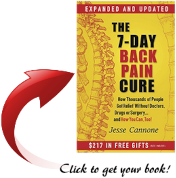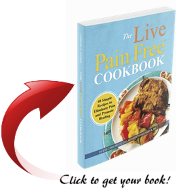On the previous blog post, I discussed the power of the “alpha antioxidant” called astaxanthin. More specifically, its documented ability to reduce chronic inflammation. Having access to natural and safe anti-inflammatories are welcome news to those who suffer from chronic back pain. As discussed in previous posts, there is a large number of individuals in the world who suffer from chronic pain, and diseases which are known to be caused by chronic inflammation. And one wonders whether the demand will far exceed the supply of quality astaxanthin from the harvest of microalgae, as there are only 3 major companies in the world that produce it.

Cardax’s Version Of Astaxanthin
According to the article on the Honolulu Star-Advertiser (“Hawaii Company Offers Solution To Chronic Pain”, Sunday 9/27/15, Money Section, D1-2), a Hawaii-based company is ready to take on that challenge. Lead by David Watumull, CEO of Cardax Inc., the company is developing a “synthetic nature-identical product” of astaxanthin. Similar to vitamin companies producing synthetic equivalents of say, vitamin C, Cardax will be involved in the synthetic production of the natural version of astaxanthin.
Watumull, who currently takes daily doses of natural astaxanthin to help relieve his joint pain, plans to market this synthetic version of astaxanthin in 2016. Current tests on animals (i.e., monkeys) have been favorable, showing that it is safe with no side effects, much more bioavailable and cheaper to produce. This synthetic version of astaxanthin is supposed to be 3 times more bioavailable than the current microalgae products in the market today. That means that for the same dosage, it will provide 3 times as much astaxanthin into your body, which equates to the need to consume less of the natural astaxanthin supplement capsules.
The Yet-Unnamed Astaxanthin Supplement
Hmmm … I wonder what it will be called when it’s available in 2016? “ExPain”? Maybe, “No PainZ”? What about “Ex-Spouse”? Okay, sorry about that … getting a little ridiculous here. All kidding aside, there are still some issues to be addressed. So far, this synthetic version of astaxanthin has only been tested on monkeys. Will Cardax employ human subjects in their future studies? And, there’s always that synthetic versus natural argument. Which is better? Some say natural is the way to go, while some say synthetic is the more safer and cheaper alternative.
Cardax Inc. is a publicly traded company, which is known as OTC stock “CDXI”. According to the newspaper article, it trades at 16 cents per share. I’m no day trader, but 16 cents a share does sound like a deal.
Current data does not show that products with nature-identical ingredients are unsafe. And so what are the implications for a company such as Cardax Inc? Is it a winning combination, if the company produces a pure, quality product based on safe and proper lab procedures, exercises the “tool” of transparency when handling and showcasing their nature-identical astaxanthin product, and educates their potential customers on what is involved?
What do you think? And, do you think this synthetic version of astaxanthin will make a significant impact on the war against chronic pain and inflammation come 2016?




